 | | | 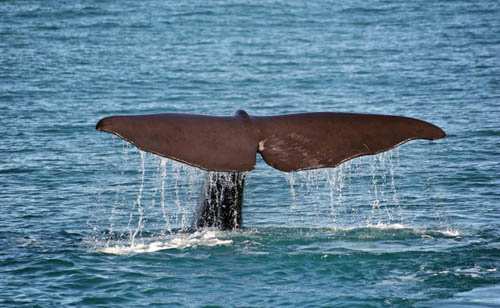 For an ocean enthusiast, June is a complicated month. The first official turn to summer brings the promise of basking beach days, fiery sunsets, and the chance to spot seasonal marine life. In this issue, RCC Presidential Fellow, Kaylee Rodriquez, reflects on how growing up on the beaches of the Florida Keys in the footsteps of Rachel Carson led her to become an environmentalist and still gives her hope. As National Ocean Month, June also ushers in a flurry of ocean-related activity among marine policy-makers and conservationists. For Washingtonians, the culmination is Capitol Hill Ocean Week (CHOW). The week feels like a breath of fresh sea air - a chance to reconnect with ocean colleagues from past experiences and collectively celebrate the gifts of the sea we love. For an ocean enthusiast, June is a complicated month. The first official turn to summer brings the promise of basking beach days, fiery sunsets, and the chance to spot seasonal marine life. In this issue, RCC Presidential Fellow, Kaylee Rodriquez, reflects on how growing up on the beaches of the Florida Keys in the footsteps of Rachel Carson led her to become an environmentalist and still gives her hope. As National Ocean Month, June also ushers in a flurry of ocean-related activity among marine policy-makers and conservationists. For Washingtonians, the culmination is Capitol Hill Ocean Week (CHOW). The week feels like a breath of fresh sea air - a chance to reconnect with ocean colleagues from past experiences and collectively celebrate the gifts of the sea we love. It’s also a near crushing reminder of the challenges we face. Biodiversity loss, coral bleaching, ocean acidification, and a rampant plastic problem are just a handful of threats to a thriving ocean. New and innovative ideas - even legislation - are brought to the table by brilliant activists and thinkers. But without robust government and private sector support, ideas can feel like small buckets bailing out a sinking ship. Yet what is our choice but to keep pushing for progress? In the wise words of one CHOW panelist, "the ocean is not too big to fail nor is it too big to fix…it is too big to ignore." | | | | | | | | RCC joined leading experts, policy makers, and nonprofit organizations at Capitol Hills Ocean Week 2022. This year’s event revolved around the theme Sea: The Future. As we reflected on the last 50 years of progress, we also set our sights on the policies and efforts needed to sustain the next 50.  | | | | Blue Carbon: A Green Solution? 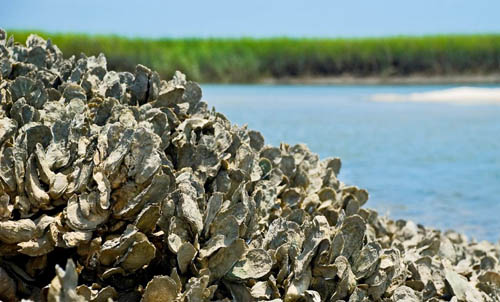 As the planet warms and sea level rises, coastal communities are looking for ways to make their neighborhoods more resilient. In the past, cities have used “gray infrastructure” like concrete sea walls, levees, and pump systems to hold back the rising tides. These structures are often expensive to build and maintain, and extreme weather events can cause them to fail. They also negatively affect local wildlife and habitats. As a result, many communities are investing in green infrastructure, also known as blue carbon – a nature-based solution that mitigates pollution and sea level rise, all while tucking carbon out of the atmosphere. As the planet warms and sea level rises, coastal communities are looking for ways to make their neighborhoods more resilient. In the past, cities have used “gray infrastructure” like concrete sea walls, levees, and pump systems to hold back the rising tides. These structures are often expensive to build and maintain, and extreme weather events can cause them to fail. They also negatively affect local wildlife and habitats. As a result, many communities are investing in green infrastructure, also known as blue carbon – a nature-based solution that mitigates pollution and sea level rise, all while tucking carbon out of the atmosphere. 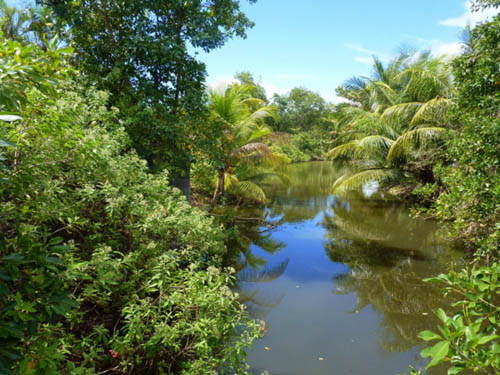 In action, blue carbon looks like wetlands in South Florida that filter agricultural runoff before it returns to the sea, protecting the delicate seagrass ecosystems that manatees call home; salt marshes and oyster reefs in North Carolina that provide a buffer against waves and rising tides; and forests of mangroves, which can sequester multiple times the amount of carbon as terrestrial forests. Preserving and restoring blue carbon ecosystems can make coastal communities more resilient to climate change, provide habitats for wildlife, and give people a space to enjoy nature. In action, blue carbon looks like wetlands in South Florida that filter agricultural runoff before it returns to the sea, protecting the delicate seagrass ecosystems that manatees call home; salt marshes and oyster reefs in North Carolina that provide a buffer against waves and rising tides; and forests of mangroves, which can sequester multiple times the amount of carbon as terrestrial forests. Preserving and restoring blue carbon ecosystems can make coastal communities more resilient to climate change, provide habitats for wildlife, and give people a space to enjoy nature.
That’s why, this month, the Rachel Carson Council, working with Sen. Sheldon Whitehouse (D-RI), wrote to Congressional leaders to prioritize and invest in blue carbon ecosystems. ACTION: Now you can help by signing this open letter to global leaders telling them to address climate change by supporting blue carbon. | | | |  | | | | | Maryland Beachgoers Urged to Be Aware of, Report Stranded Marine Wildlife With summer officially beginning, the Maryland Department of Natural Resources is reminding people that many marine wildlife animals will be making their return to the Chesapeake Bay, Atlantic Ocean, and coastal bays. Marine animals include dolphins, manatees, sea turtles, whales, and others. Bottlenose dolphins and loggerhead sea turtles are the most common in Maryland, but more than 25 marine species and four kinds of sea turtles have also been found in state waters. | | | | | | Click, Clack and Pop: Sounds Indicate Health of Coral Reefs, Study Finds Monitoring the planet’s ailing coral is costly and arduous. Now new research shows that scientists can do it by listening in. The popping sound, like milk hitting puffed rice cereal, that you hear when putting your head underwater is not your ear adjusting to a different atmosphere – it is the sound of the submarine world. Fish chat to each other, or move water with their fins; hard-shelled creatures scrape against the surfaces; molluscs drag themselves to their nooks. | | | | | | See the Mysterious Sea Creatures That Only Come Up at Night “Blackwater” divers photograph the largest migration of animals on the planet. Every night at sundown, a great mass of mostly small sea creatures rises up from the depths into the topmost layers of the planet’s oceans. This daily vertical migration is the largest on Earth—an estimated 11 billion tons of animal biomass travels miles upward each night and then, before the sun rises, returns back to the dimly lit “twilight zone” below. The animals make this journey to feed on the organic material closer to the water’s surface and do so at night to avoid being eaten by the larger predators swimming there. | | | | | | | | Ocean Oil Slick Map Reveals Enough Greasy Patches to Cover France—Twice An algorithm-aided analysis of satellite images reveals the size, distribution and sources of oil slicks at sea. How many oil slicks are there in the ocean? Where are they, and where did they come from? These seem like simple questions, but with 139 million square miles of ocean, keeping an eye on these slippery streaks on the sea surface is no mean feat. Now, however, researchers have used the unique capabilities of satellites to assemble what they say is the first global map of oil slicks. | | | | | | The Ocean Is Climate Change’s First Victim and Last Resort Rain forests may be known as the planet’s lungs, but it’s when standing before the seas, with their crashing waves and ceaselessly cycling tides, that we feel the earth breathe. The ocean, say scientists, is the source of all life on earth. It is also, say philosophers, the embodiment of life’s greatest terror: the unknown and uncontrollable. This duality has become increasingly manifest in the climate discourse of recent years, as ice melts, seas rise, and shores everywhere face storms of a ferocity unseen in living memory. | | | | | | National Parks Aim to Phase Out All Single-Use Plastics by 2032 Visitors to the iconic U.S. sites will see utensils and cups made from biodegradable, compostable and recycled materials. Visitors to the United States’ national parks will begin seeing more compostable, biodegradable and recycled materials in restaurants and gift shops as the federal government moves to stop using single-use plastic products on public lands by 2032. Deb Haaland, the Secretary of the Interior, announced the goal this week on World Ocean Day, noting in a statement that the Department of the Interior is “uniquely positioned to do better for our Earth.” | | | | | | Ice World: Antarctica’s Riskiest Glacier is Under Assault From Below and Losing Its Grip Flying over Antarctica, it’s hard to see what all the fuss is about. Like a gigantic wedding cake, the frosting of snow on top of the world’s largest ice sheet looks smooth and unblemished, beautiful and perfectly white. Little swirls of snow dunes cover the surface. But as you approach the edge of the ice sheet, a sense of tremendous underlying power emerges. Cracks appear in the surface, sometimes organized like a washboard, and sometimes a complete chaos of spires and ridges, revealing the pale blue crystalline heart of the ice below. | | | | | | | | | | | | Leaders from around the world will convene in Lisbon, Portugal for the UN Ocean Conference 2022. “The conference, co-hosted by the Governments of Kenya and Portugal, comes at a critical time as the world is seeking to address many of the deep-rooted problems of our societies. The overarching theme is ‘Scaling up ocean action based on science and innovation for the implementation of Goal 14: stocktaking, partnerships and solutions’.” Click here for a list of virtual side events | | | | | | Have Thoughts on Wind Energy?
Submit Your Comments to the Bureau of Ocean Energy Management 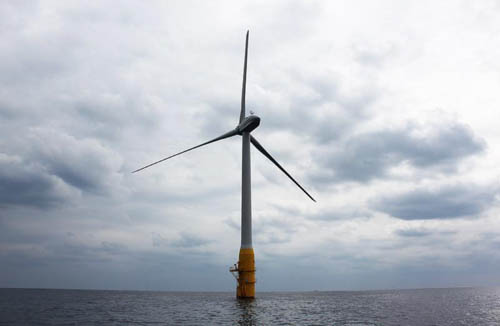 The 45-day public comment period on a draft environmental analysis for a proposed offshore wind energy project in New Jersey is open from June 24-August 8. The project, consisting of up to 98 turbines, could generate power for more than 500,000 homes a year if approved. The 45-day public comment period on a draft environmental analysis for a proposed offshore wind energy project in New Jersey is open from June 24-August 8. The project, consisting of up to 98 turbines, could generate power for more than 500,000 homes a year if approved.
BOEM will hold three virtual public meetings, where the public can learn more about: the review process, the Environmental Impact Statement (EIS) schedule, potential impacts from the proposed project, and proposals to reduce potential impacts. The public meetings will be held on the following dates and times: - Thursday, July 14, 2022; 1:00 p.m.
- Wednesday, July 20, 2022; 5:00 p.m.
- Tuesday, July 26, 2022; 5:00 p.m.
 | | | | | | How to Find Joy in Climate Action 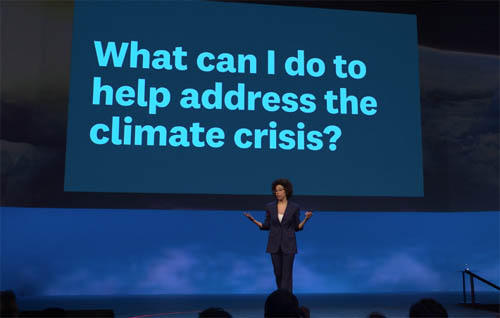 We can all play a role in the climate movement by tapping into our skills, resources and networks in ways that bring us satisfaction, says climate leader Ayana Elizabeth Johnson. She suggests drawing a Venn diagram to map these questions: What are you good at? What is the work that needs doing? And what brings you joy? Where your answers intersect is where you should put your climate action effort. "Averting climate catastrophe: this is the work of our lifetimes," Johnson says. We can all play a role in the climate movement by tapping into our skills, resources and networks in ways that bring us satisfaction, says climate leader Ayana Elizabeth Johnson. She suggests drawing a Venn diagram to map these questions: What are you good at? What is the work that needs doing? And what brings you joy? Where your answers intersect is where you should put your climate action effort. "Averting climate catastrophe: this is the work of our lifetimes," Johnson says.
Click here to watch | | | | | | | | | | Diving into Callum Roberts’ Reef Life: An Underwater Memoir “Roberts is the Rachel Carson of the fish world” -The New York Times 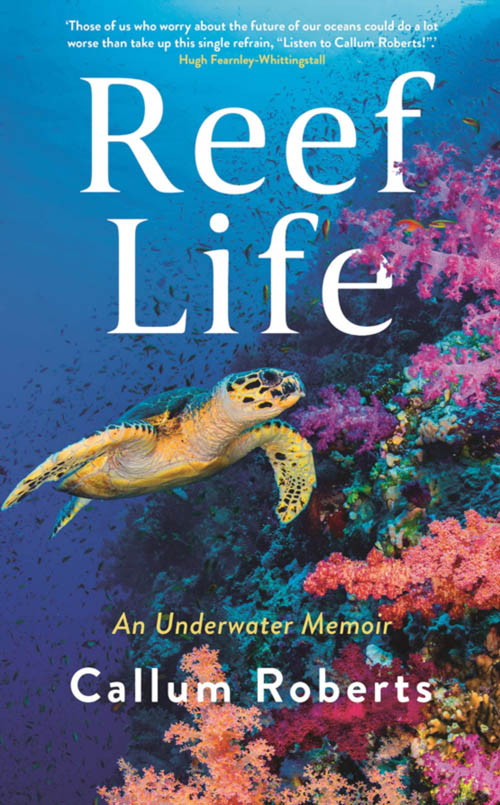 Reef Life begins like the story of most environmentalists: with a moment. A moment so influential that it changes the course of your life. For Rachel Carson, it was finding a fossilized shell on a rocky Pennsylvania hillside. For Callum Roberts, it was his first reef dive in the Red Sea. Fascinated by the vibrant and mysterious ecosystem, Roberts dedicates his life to studying coral reefs. Reef Life begins like the story of most environmentalists: with a moment. A moment so influential that it changes the course of your life. For Rachel Carson, it was finding a fossilized shell on a rocky Pennsylvania hillside. For Callum Roberts, it was his first reef dive in the Red Sea. Fascinated by the vibrant and mysterious ecosystem, Roberts dedicates his life to studying coral reefs.
In his detailed accounts of his dives, Roberts takes on the difficult task of describing a place and feeling for which no words exist. He uses similes and comparisons with familiar objects and colors to help readers envision the colorful scenery that unfolds below him.
“Salmon, purple, cream, amber, mauve and sky-blue ripple and blend in patterns reminiscent of 1960s posters,” and “schools of Anthias pluck invisible plankton from the passing flow, their tangerine fins flowing like silk scarves.”
Still, it is impossible to fully portray colors that do not exist in a crayon box and organisms that more closely resemble aliens on movie screens than animals in a textbook. The various photos included throughout the book help complete the story, but you will not regret looking up different species for yourself!
Roberts’ uses his dives as a map of the seafloor and his life. Divided into locations and time periods, each section reveals the highs and lows of being a marine scientist. Breathtaking moments of wonder and discovery relay a life of happiness by the sea. However, these moments are challenged by fast-paced currents, slow moving bureaucracies, and heartbreak. Each dive also tells stories about regions and moments in history—ranging from the aftermath of the Gulf War to newly protected areas. Throughout the book, Roberts is caught in a tug of war between wonder and worry. Just as the scientific community starts understanding the complexities of coral reefs, they begin disappearing. The ecosystem that seemed so alive and invincible on his first dive is quickly crumbling under the pressure of human influence. Millions of years of coral infrastructure has been wiped away in the past 50 years, begging the question if coral reefs will survive the next 50. “The recent mass coral mortality has no precedent in history. It is unique, a one-off, and so the finger of blame points to us.” It is nearly impossible to encounter reefs without feeling compelled to preserve them. Through the vivid descriptions in this book, readers can feel connected to the most biodiverse ecosystems in the world without putting on a scuba tank. If they are filled with the same wonder that Roberts was on his first dive, then they too will join a community of reef scientists, advocates, and lovers who are calling for immediate protection and change. That is what makes Roberts optimistic. —Kaylee Rodriguez, RCC Presidential Fellow | | | | | | Ocean Advocacy Art Gallery This interactive space showcases the award-winning Art, Poetry & Spoken Word, Creative Writing, Film, Performing Arts, and Interactive & Multimedia created by middle and high school youth around the world in response to our annual call for art, the Ocean Awareness Contest. This space is a celebration of individual artistic expression as well as the power of collective voices—a global community of youth passionate about conservation. We invite you to dive into this powerful collection that explores how human activities impact the health of our blue planet, and shines light on our intimate connection with oceans and marine life. Click here to visit the gallery | | | | | |  Stephanie Murphy, RCC Stanback Presidential Fellow Stephanie Murphy, RCC Stanback Presidential Fellow
Stephanie Murphy is co-lead of the RCC Coasts and Ocean program. She is a Master of Environmental Management candidate at Duke University where she specializes in environmental economics and policy.
 Kaylee Rodriguez, RCC Stanback Presidential Fellow Kaylee Rodriguez, RCC Stanback Presidential Fellow
Kaylee Rodriguez is co-lead of the RCC Coasts and Ocean program. She is a senior at Duke University pursuing a major in Public Policy, a minor in Environmental Science and Policy, and a certificate in Policy, Journalism, and Media Studies. | | | | | |  The Rachel Carson Council Depends on Tax-deductible Gifts From Concerned Individuals Like You. Please Help If You can. The Rachel Carson Council Depends on Tax-deductible Gifts From Concerned Individuals Like You. Please Help If You can. | | | | | | | |  Sign Up Here to Receive the RCC E-News and Other RCC Newsletters, Information and Alerts. Sign Up Here to Receive the RCC E-News and Other RCC Newsletters, Information and Alerts. | | | | | | | | | | | |